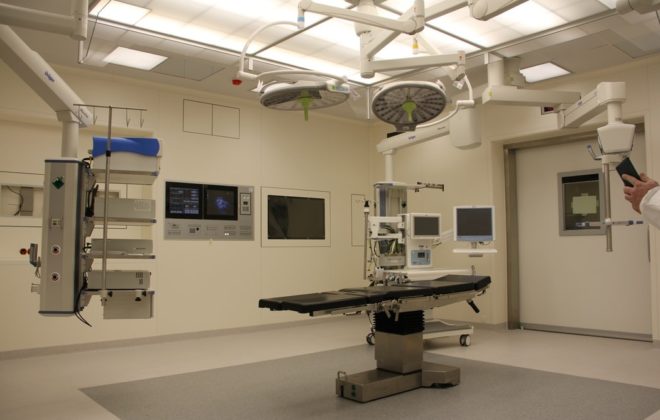Robotics in Healthcare – The New Frontier
In today’s world, robotics finds its usefulness in every industry be it space discovery, defense, manufacturing, automobile, movies, agriculture, and of course, in the medical field. With a wide variety of robots, such as humanoid robots, evolutionary robots, bio-inspired robots, and cognitive robots being used to extend human abilities to perform delicate and dangerous tasks, there is definitely a growing concern about robots completely replacing human workforce. But with some careful planning, we can make sure that the human touch always stays intact while taking the help of these robots in medicine. Nevertheless, robots are playing a vital role, especially in healthcare, by assisting in many aspects of healthcare, such as helping with collecting vitals, performing procedures and surgery, and rehabilitation of patients.
Let’s take a quick look at some of the major robotic advances that have changed the healthcare scenario over the past few years.
Measuring Vital Signs
Any busy hospital has more than 200 patients visiting each day to get their medical examinations done. A practitioner spends an average of 3- 4 minutes in measuring the vitals of each patient. Transferring this task to an automated self-service kiosk could free up at least 10 hours of a physician’s time daily to focus on more critical tasks. The ‘WellPoint’, a self-testing health kiosk, is the new robo-nurse that lets patients measure their own vitals, such as blood pressure, weight, and heart rate without the need for a nurse or doctor. The results are recorded in a database, and the physician can see the results instantly.
Testing Blood Samples
Taking blood samples and getting it tested is a vital part of a health diagnostics as it can help identify major health problems. Though it is simple to conduct a blood test, behind the scenes, the procedures are quite complex. Different labs have their own standards and there is a lack of standardization among different labs.
Robotics can help with standardizing blood testing procedures by automating the process. In an automated line system, samples are transported to different areas of the lab depending on the type of testing to be done. Analyzers read patient information from barcodes, ensuring that no errors result due to testing the wrong patient’s sample. This type of automation removes the need for technicians to handle the samples and ensures that the technicians’ time is freed up to perform other useful tasks, such as quality checking.
Freeing up the time for Hospital staff
Hospitals need to move huge amounts of inventory, such as linen, specimens, food, files, and so on around the hospital and to patient units. This is a challenging task involving huge costs, risks, and demands safety. Therefore, automating the delivery of this material generates considerable savings, allows hospital staff with more time to attend to patients. Some robots are designed to perform as delivery robots and help to deliver this inventory around the hospital, thus, freeing up the time of the hospital staff.
TUG is an example of a delivery robot that is used to perform many such tasks. TUG robots can easily navigate through narrow passages, doorways, and elevators to ensure safe, timely and accurate delivery. They are used to efficiently deliver food to patients, reliably deliver linens to nursing units and safely transport specimens through the hospital to the lab.
Making Surgical and other Procedures Easier and Safer
Today, many surgical procedures that were once highly complex and invasive are now being performed using minimally invasive techniques and with higher precision using robots. For example, the da Vinci System powered by robotic technology is used for performing Cardiac surgeries, gynecologic surgeries, surgeries of the neck and head, thoracic surgery, and other general procedures. It uses a laparoscope to translate a surgeon’s hand movements into smaller, precise movements inside the patient’s body. The surgeon retains a complete control of the system. However, as the laparoscopic system has greater reach and flexibility, smaller incisions made with more precision are enough to access the problem areas. The da Vinci System has changed the experience of surgery for more than 3 million patients around the world.
Another use case of robotic technology is in curing epilepsy. In earlier years, the only solution to curing epilepsy was a dangerous brain surgery that involved drilling into the skull and took a long recovery time. Today, researchers at Vanderbilt University are exploring possibilities of using robotic technology to perform brain surgery with a minimally-invasive procedure by entering the patient’s cheek.
Improving Mobility
Robotic prosthetics can help patients who have lost their limbs or need to improve mobility. Advanced prosthetics also called as exoskeletons are wearable devices that help paraplegics regain not only their physical ability but their mental confidence too. However, at present, this technology is expensive and may not covered by insurance companies.
Being a Companion
Some robots, such as Paro, Buddy, Jibo, and Pepper serve as social partners or companions for the elderly, or those suffering from loneliness and depression. These robotic companions have touch sensors, cameras, and microphones that allow these robots to engage in a friendly conversation with patients and can improve patient health. Roomba is another robot that helps maintain a clean environment for the elderly and also ensures security and productivity of these persons. These technologies allow the elderly to remain secure and have a sense of independence.
Conclusion
The application of robotics in healthcare is all set to bring about massive changes in the medical industry in years to come. It will bring better accuracy and efficiency in the healthcare industry by decreasing the incidence of human error and limitations. It will also make the production and distribution of pharmaceuticals cheaper and more efficient, lighten the load of medical professionals, and help people walk again. The key for physicians and hospitals lies in keeping themselves informed about the latest advancements in the area and better prepare themselves to adopt this path-breaking technology.




